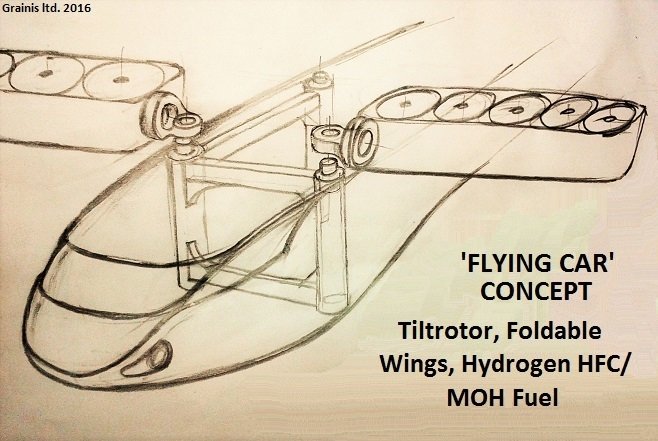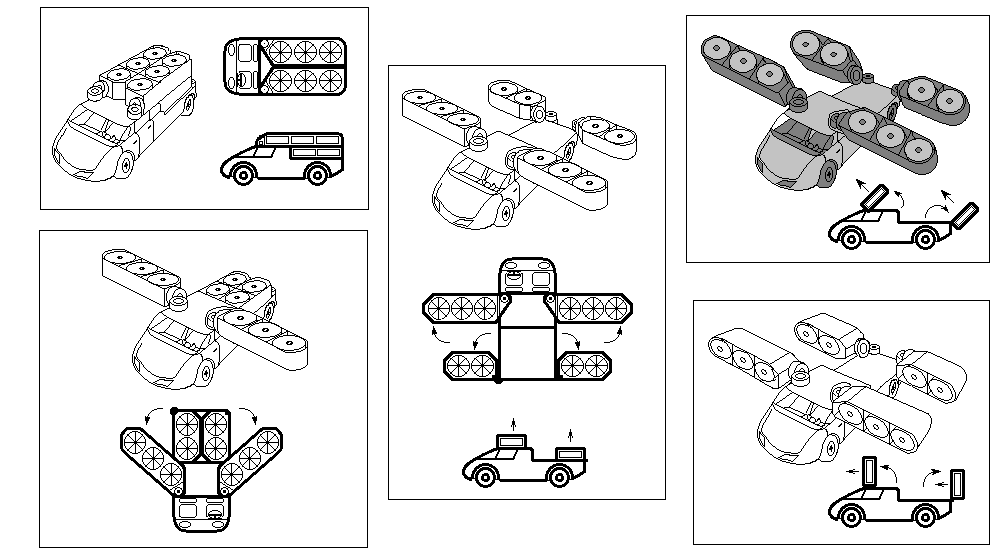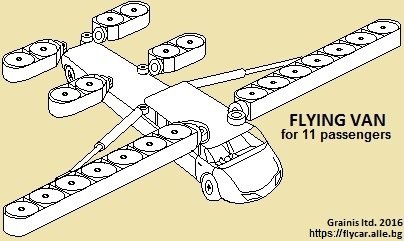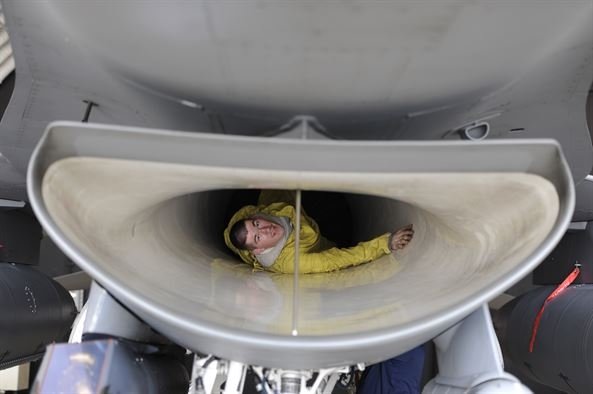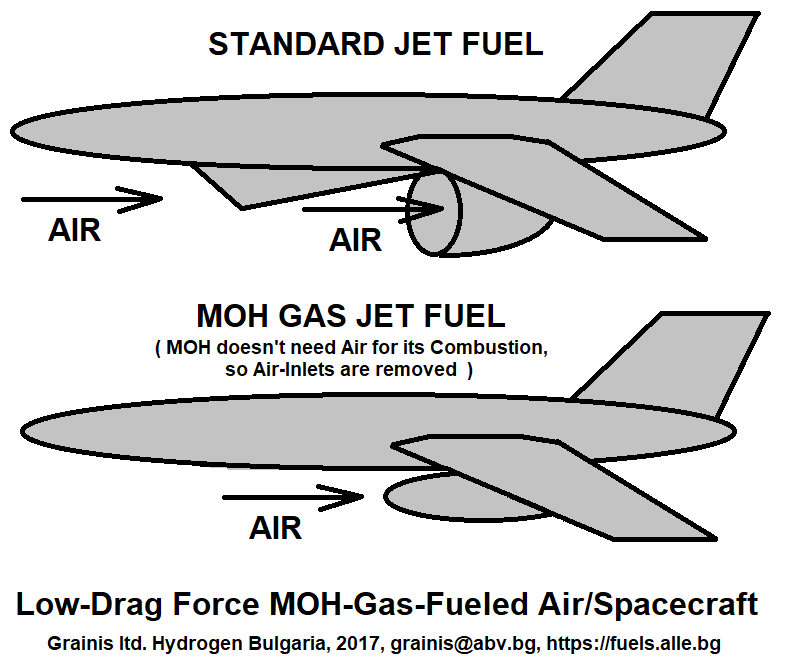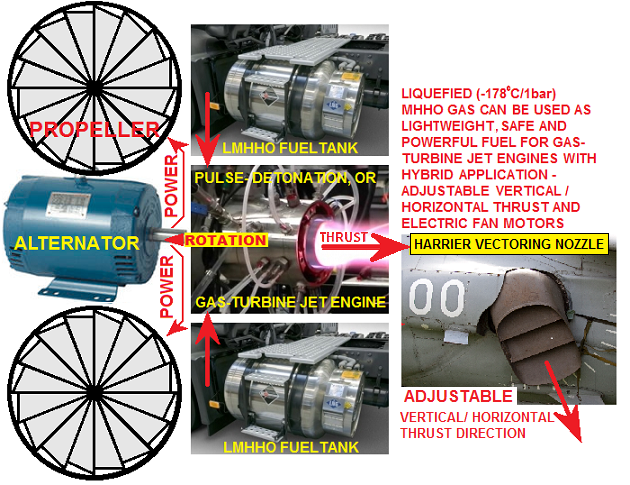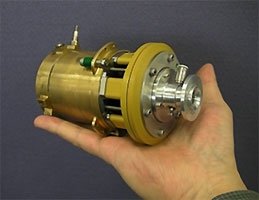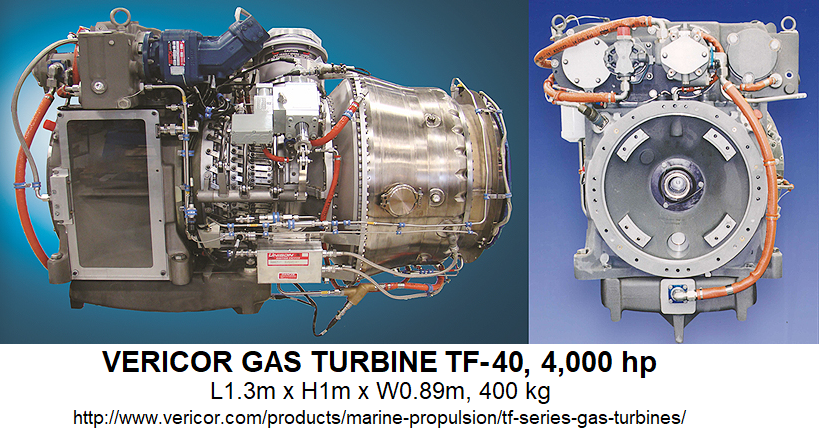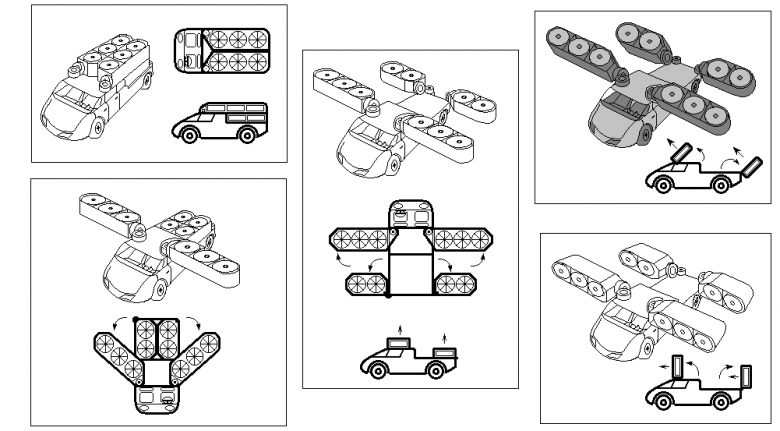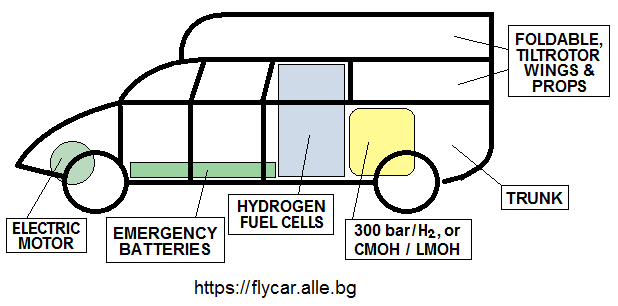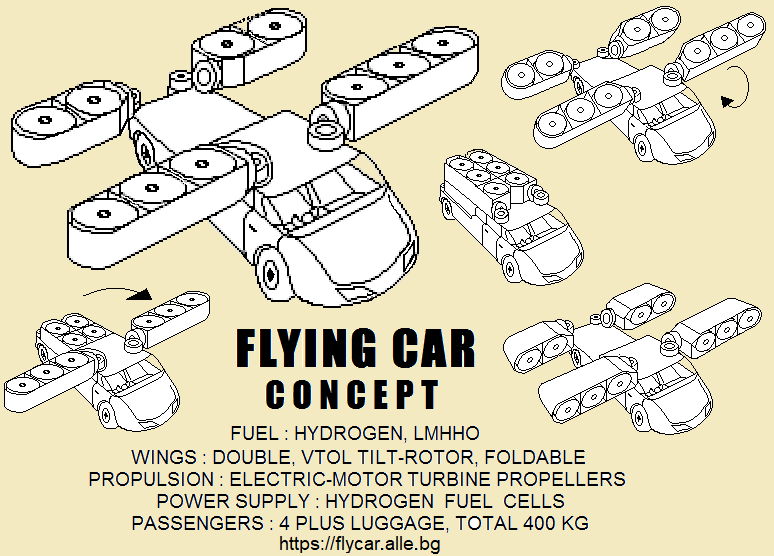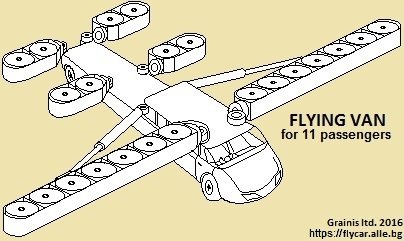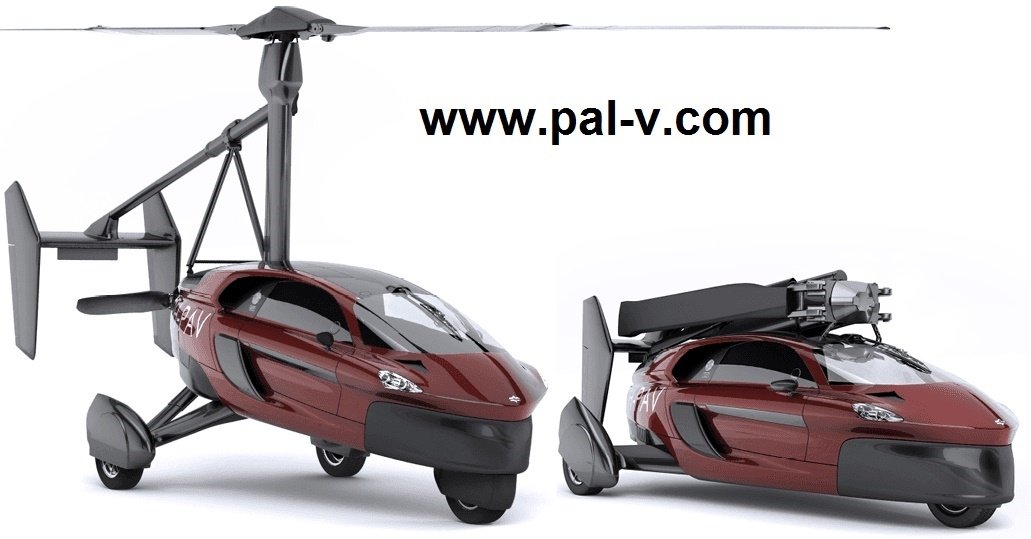This website is dedicated to the idea of creating a flying car, or van, or bus, which can take off and land vertically, and move both on the road and in the air.
Flying Van for 11 passengers
We offer high-effective technologies for Pure Hydrogen, Stoichiomatric Oxygen-Hydrogen (SOH) and Modified Oxygen-Hydrogen (MOH) gas-composition clean fuel production by a low-power water electrolysis (LPWE) method. https://fuels.alle.bg
We also offer a number of special propulsion engine and system design concepts, especially for Aircraft, Combined Land-Aerial (Flycar) and Aerospace applications, fueled by these gases - https://watercar.alle.bg
Our low-cost water electrolysis method allows one liter of SOH gas to be produced with only 0.4Wh electric energy.
---- Modified OH (MOH) gas is an upgraded version of the SOH, produced by ultrasono-modified water electrolysis, and is a perfect clean, cheap and safe fuel - it cannot be ignited by a spark at normal conditions.
Unlike the regular SOH, the MOH fuel can be compressed over 200-1,000bar, liquefied at 1bar/-178deg, pumped and stored for years in lightweight carbon-composite CNG/LNG tanks (Hexagon-Xperion) and burned as a single fuel in all kinds of gasoline and diesel vehicle's engines and also in Aircraft's Gas-Turbines, Ram/Scram-Jet and Pulse-Detonation Rocket Engines for aircraft's hyper-sonic speeds over 20 Mach.
MOH was patented in 2008 and 2011 in Japan as Ohmasa Gas.
https://www.youtube.com/watch?v=nVwmr7WNtNA - heating buildings with MOH gas
---- Liquefied MOH (LMOH) gas is the ideal Vehicle's and Aircraft's Fuel - it is 100% clean, renewable, safe, extremely cheap, with very high energy density (167kg H2 in 1m3 LMOH, vs 70kg H2 / 1m3H2 ).
The only waste emitted is clean water (steam), which could be 100% recycled.
LMOH is also an excellent, compact and safe Pure-Hydrogen Storage.
Pure Hydrogen and Oxygen can be easily extracted and separated onboard, on-demand, out of the LMOH, and used in Hydrogen Fuel Cells for power generation and driving Electric Motors for vehicles and aircraft propulsion or else.
MOH doesn't need any air to burn. All the Oxygen needed for its combustion, is contained in its formula.
This unique property is very important in regard of the drag-generating air intakes . All the air intakes on a MOH-fueled aircraft's fuselage could be removed, thus increasing its speed tremendously.
FLY-CAR'S FUEL AND PROPULSION OPTIONS
Using our technologies, several kinds of low-cost fuels and relevant propulsion powertrain could be applied in a Flying Car Concept, as follows :
1. COMPRESSED HYDROGEN.
Hydrogen can be compressed and safely stored in special carbon-fiber composite bottles and used as a 100% clean and powerful fuel - blended with Methane, or as a single fuel in conventional, CNG-upgraded Gasoline IC engines - https://avt.inl.gov/sites/default/files/pdf/hydrogen/f150_hice_datasheet.pdf
Pure Hydrogen can be also used as a fuel for on-board power generation by high-effective (over 60%), Hydrogen Fuel Cells. Power can be then used to supply electric motors for driving propellers for combined vertical takeoff and landing (VTOL) aircraft systems.
2. LIQUEFIED MOH (LMOH) FUEL.
This is a perfect fuel, which can be used both as it is, or as a pure hydrogen and oxygen storage. Both gases can be easily extracted out of the LMOH, separated by a simple molecular sieve membrane, and used as a fuel in HFCs for power generation.
LMOH can be also burned in conventional gasoline IC engines, in gas-turbines for generating reaction thrust for drag or takeoff/landing by Vectoring Nozzles (Harrier Fighter) or pneumatic pressure for driving propellers' pneumo-motors, for turning an alternator's shaft for generating power,
POWER-TO-WEIGHT RATIO (Specific Power).
The power-to-weight ratio (Specific Power) formula for an engine (or power plant) is the power generated by the engine divided by it's mass.
A typical turbocharged V8 diesel engine might have an engine power of 250 kW (340 hp) and a mass of 380 kg (840 lb), giving it a power-to-weight ratio of 0.65 kW/kg (0.40 hp/lb).
Examples of high power-to-weight ratios can often be found in Turbines. This is because of their ability to operate at very high speeds. For example, the Space Shuttle's main engines used turbopumps (machines consisting of a pump driven by a turbine engine) to feed the propellants (liquid oxygen and liquid hydrogen) into the engine's combustion chamber. The original liquid hydrogen turbopump is similar in size to an automobile engine (weighing approximately 352 kilograms (775 lb)) and produces 72,000 hp (53.6 MW) for a power-to-weight ratio of 153 kW/kg (93 hp/lb) or 235 times more than the diesel engine.
LMOH-fueled Gas-Turbine Engine could provide a high Power-to-Weight Ratio, being compact and lightweight, by producing both reaction thrust, electric power by an alternator - power supply for the propellers, and also pressurized gas flow for propellers' pneumo-turbine motors option (which eliminates the need of heavy alternator and electric motors for the props).
Here is a concept for a Flying Car with foldable, tilt-rotor, propeller-built-in wings, allowing both vertical takeoff/landing and horizontal drag motion.
Wings&Props Design is based on the fact, that today's multi-copter drones using simple propellers, seem to be the safest, most adaptive and easy to be controlled, manually or electronically, flying machines.
This Flycar is intended to carry 4 passengers and luggage, about 400 kg in total.
Fuselage and the wings are made of lightweight carbon-fiber composite.
Wings' length can be increased for rooming more propellers if needed for generating a more powerful lifting/drag force. Accordingly, the overall vehicle's length will be increased to room the longer wings on it's roof, plus more hydrogen fuel cells and a bigger fuel tank inside, as shown on the picture.
Electric-motor / Turbine Propellers are boxed between two classic aviation wings, thus creating additional lifting force during the horizontal movement in the air. Wings are equipped with ailerons, allowing a great level of the flycar's maneuverability.
A lightweight carbon-fiber Tank with 300bar compressed Hydrogen, or a cryogenic tank with liquefied at 1bar / -178deg.C MOH gas, with a gas membrane-separator and a cryogenic pump, supplies the Fuel - Hydrogen, to the stack of hydrogen fuel cells, which produces power and supplies the props' and the car's propulsion electric motors .
An IC-Engine-Generator set is possible to be installed, producing electric energy, instead of the hydrogen fuel cells stack as well.
There is also a powertrain option for larger / cargo vehicles with on-board Hydrogen or MOH gas production out of water, 'on demand', by high-effective electrolysis dry-cells.
A Land-propulsion Electric Motor will be installed between the front wheels of the Flycar.
A small stack of rechargeable Li-Ion Batteries will be deployed under the pilot's / passengers seats. Batteries will be used for starting the Fuel Cells work and in case of emergency - for the Flycar's safe landing.
This Flying Car has 4 double, tilt-rotor, foldable wings, equipped with powerful high-rpm electric propellers.
Wings can be folded and unfolded, thanks to a 3D joint.
Each wing is actually double - upper and lower wing, equipped with ailerons for full maneuverability.
Wings create additional lifting force which helps the propellers.
This vehicle can run easily on land and in the air, can take off and land vertically, and can drag horizontally or by angle, at high speed.
All propulsion motors - for land movement and propellers for air movement, are electric, powered by Hydrogen Fuel Cells.
Pure Hydrogen Fuel and Pure Oxygen, needed to supply the Fuel Cell power generation process, are being extracted out of Liquefied MOH Gas, stored in a special tank onboard the flying car.
Another option is the gas-turbine option, fueled directly by LMOH.
Every single propeller could be equipped with a small gas turbine (shown above) with ultrahigh speed of shaft's turning (450,000 rpm), or a larger turbine-generator could produce power for driving electric-motor propellers.
All crafts will be equipped with ejectable emergency Parachutes !
